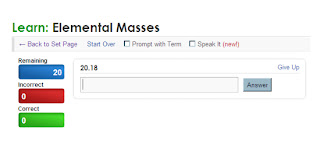'A teacher cannot build a community of learners unless the voices and lives of the students are an integral part of the curriculum.'
-- Peterson --
Using collaborative groups can be very challenging. The students must value the process of learning and understand that within the classroom environment they are responsible to each other and for each other as members of that learning community. With that in mind, students must be accountable to the group, to be prepared and to share equally in the learning process. Students should understand that collaborative groups are not an opportunity to socialize and most definitely not an opportunity to let others do all the work. Each member of the group must pull their own weight in order for the success of everyone.
Playing Teacher
Divide students into even groups of five or less. Give each student in a group a unique concept to learn. Then bring the group back together and let students teach each other what they have learned. Make sure that the entire group is learning about the same subject, just a different aspect of the subject. Test each group when the teaching session is completed within each group.
The Interview.
Divide students into groups with an even number of students in each group. Each member of a group chooses a partner. Have individuals interview their partner by asking them clarifying questions. Now let the partners switch roles. Lastly, let members of the entire group share their responses as a team.
Catch a Brainstorm.
Divide students into teams of 4 to 6, and appoint one student on each team to be the "secretary." Give each team a different question that can have many answers. Now give each team a chance to brainstorm answers to the question, with the "secretary" writing down the team's responses. Have the students work in a circle, each taking turns to give a response, instead of having all of the students shout out answers to the "secretary" at once.
Divide students in groups of four. Label each student in a group as number 1, 2, 3, or 4. Ask the groups a common question. The group then works together to come up with the correct answer. Now you call out a number (between 1 and 4), and the person in a group that is assigned that number is to give you the answer to the question.
Group Grading.
After taking a test, divide your students into groups with an even number of people in each group. Let students trade their test papers, so they will be grading each other. Now give each group a few minutes to determine which answers are correct and to see which group members may have made mistakes. Allow the groups time to explain so that those members can see why their answer was wrong and what the correct answer should have been. Wrap up the groups and answer any dangling questions not addressed in the individual groups.
The Great Debate.
Cooperative learning can be used in any situation where you want students to debate the points of view of a concept being taught. For instance, when learning about the elections process, you can divide students into groups and have them hold a debate over what they would change about the elections process, what is working and not working with the current process, etc.
Listing Activity.
Divide students into groups of five or less. Ask each group to list words and/or phrases that describe what they are being taught, i.e., Energy, heat, potential, light, kinetic… Be sure that every response is written down that each individual gives. Have each group discuss their list and then come up with the words and/or phrases the entire group agrees on. Later each group can get up before the class and discuss why they chose the responses they did.
The One Minute Game.
Divide the class into teams of five or less. Have each group contemplate answers to these questions, giving them one minute to answer them:
What was the main thing you learned today?
Tell me two questions that you have remaining about this lesson.
What else would you like to know about this topic?
This is a great cooperative learning activity that helps students give you feedback about the lessons they learned.
Assigning Group Roles
Consider assigning each member of a group a role, so each member feels they are contributing to the group in a positive way. Roles could consist of:
Leader - The individual that makes sure everyone in the group has mastered the concepts being learned through the exercises.
Secretary - The person who records responses for the entire group.
Reporter - The person that speaks for the group when standing in front of the class.
Monitor - The person who keeps time for the group with timed assignments.
Manager - The person who fills in for any member of the group who is absent, and assists the leader of the group.
Roles can be switched within a group from time-to-time. Allow students to critique the performance of each member of the group. This will hold them accountable to each other. Read the critiques and provide feedback to let students know how their team members view there contributions.
Ranking order.
Determine whom you will put into groups by using the following exercise.
1. Present your students with an issue that is pertinent to a lesson. Have the students rank this issue by how they feel about it with 1 being in strong agreement and 10 being in strong disagreement.
2. Place a rank-order line on your whiteboard and record the students' responses on the line.
3. Now form your groups by pulling out one person from each end of the ranking order, and then two people from the center of the line.


























